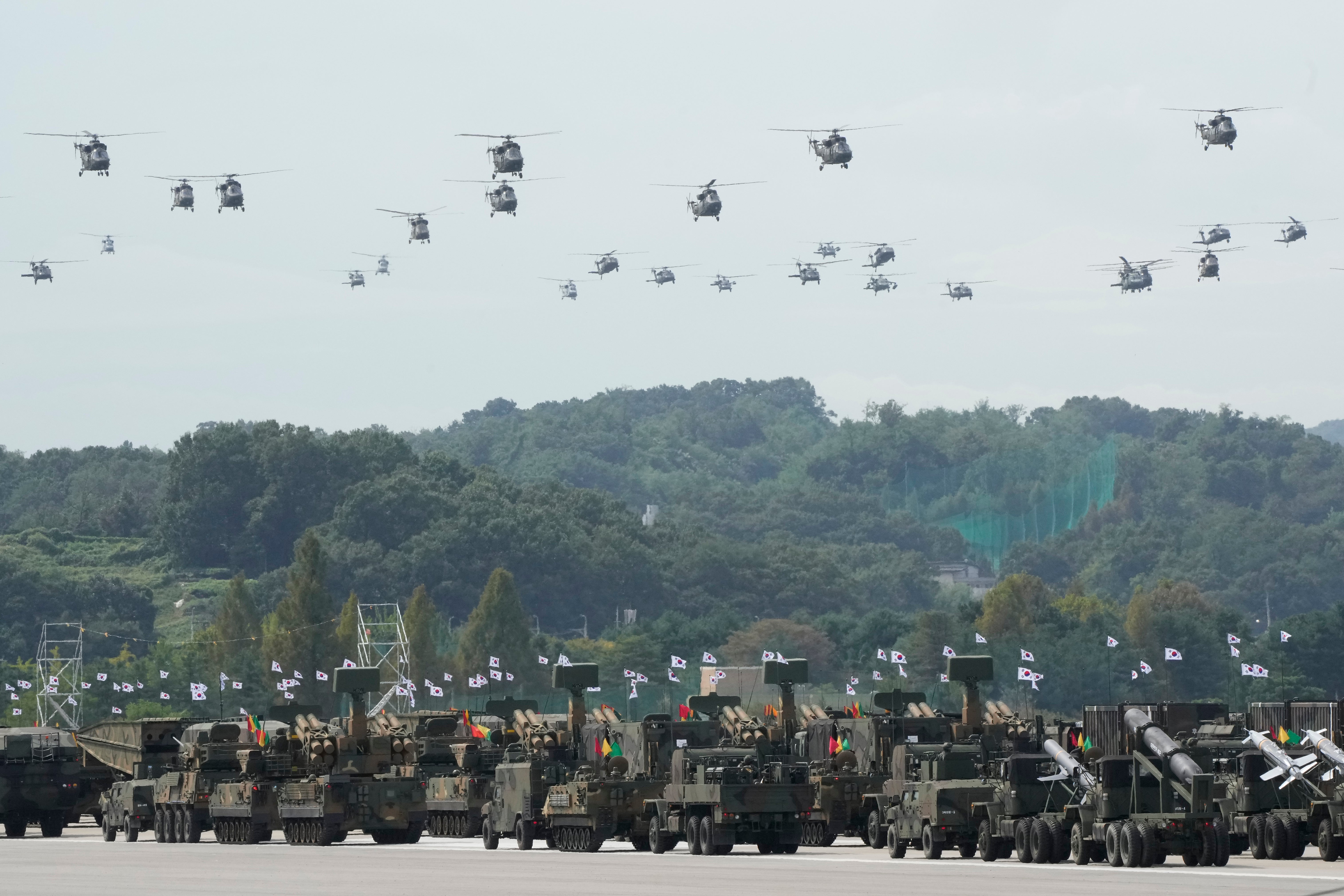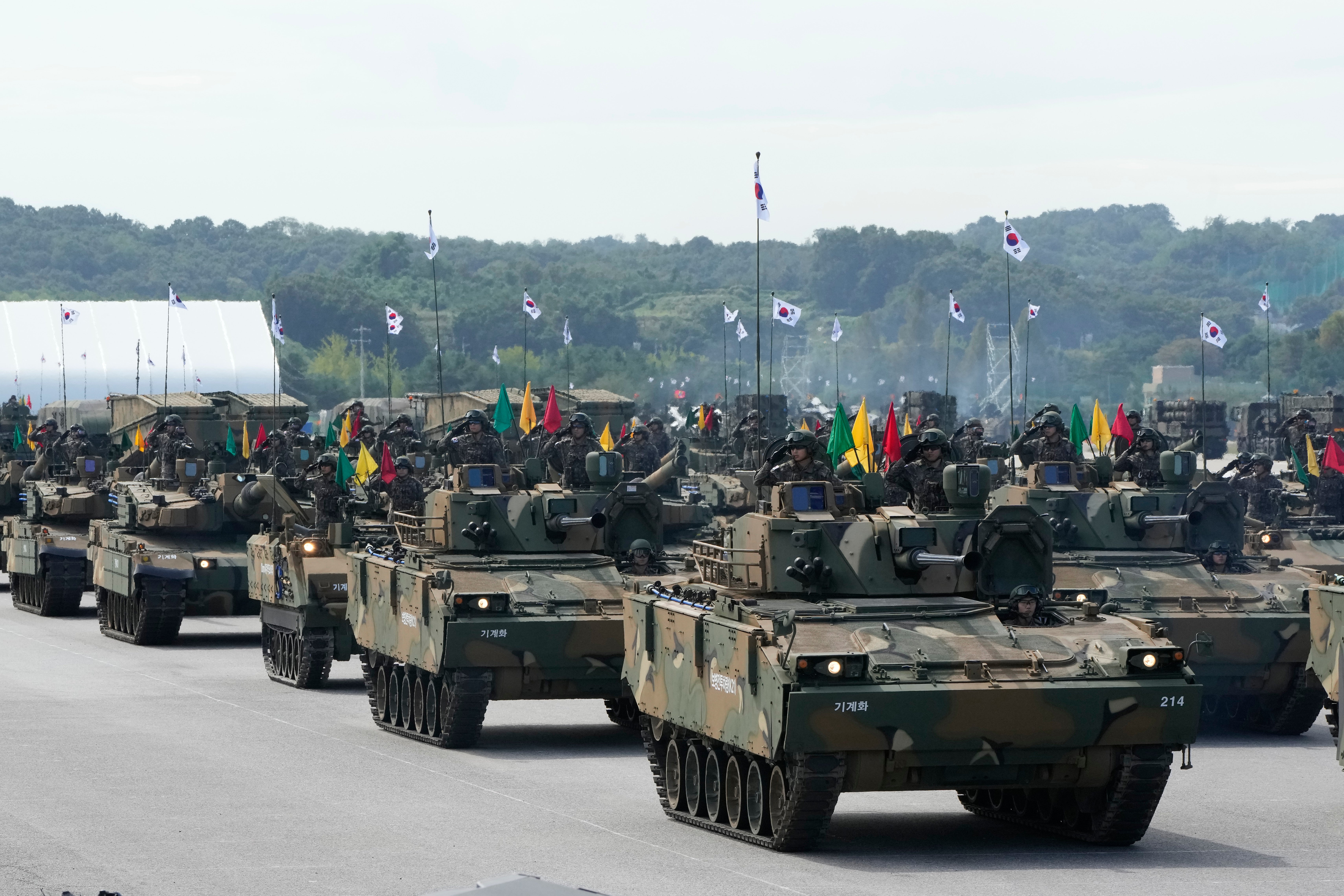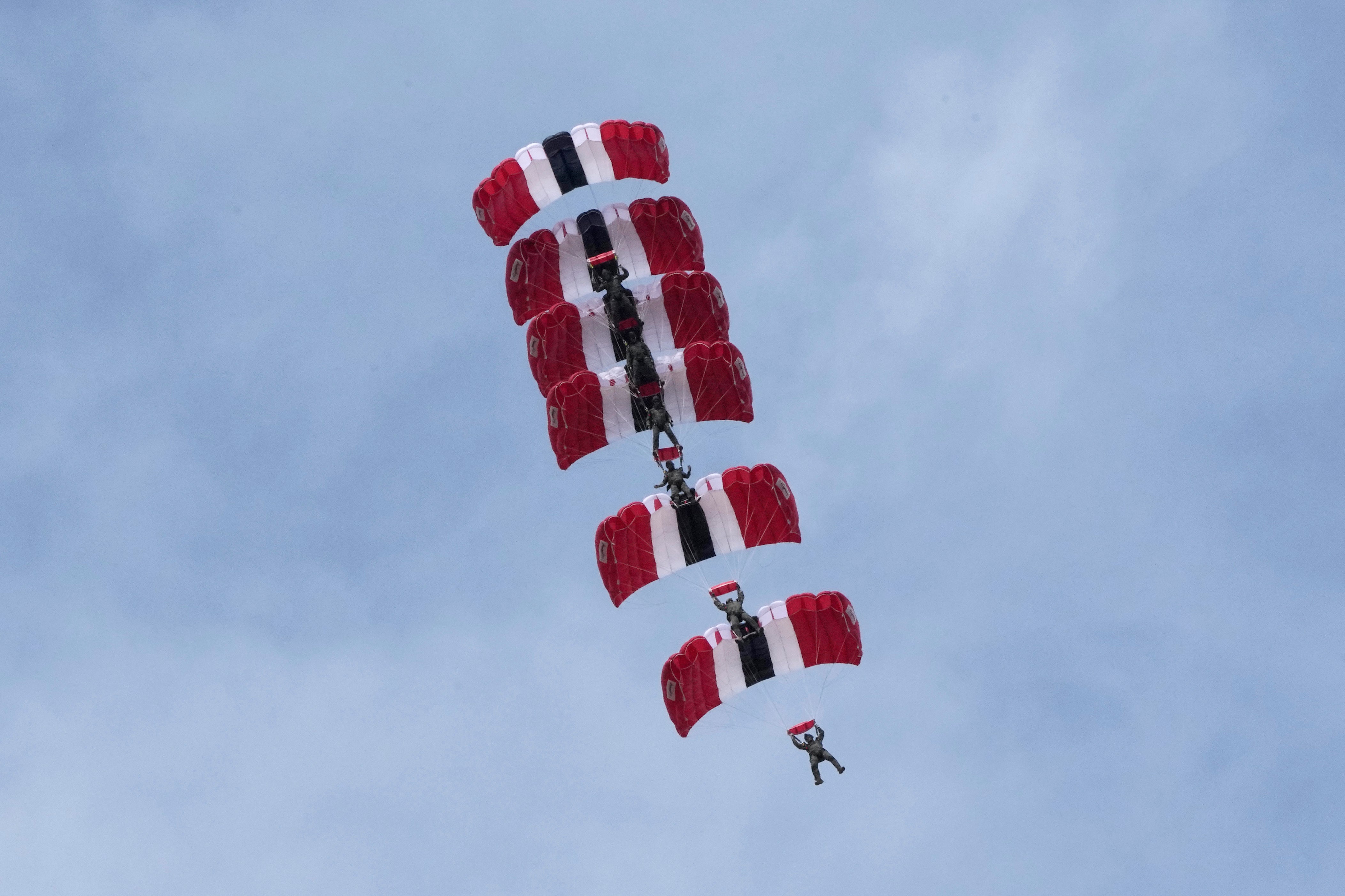South Korea shows off powerful missiles in new warning to Kim Jong-un
South Korean military displayed its most powerful Hyunmoo-5 ballistic missile

South Korea has revealed its most powerful missile and other weapons targeting North Korea during a massive Armed Forces Day ceremony, as the president warned the North's regime would collapse if it attempts to use nuclear weapons.
South Korea’s weapons displays and warning against North Korea came after its northern rival recently rose regional animosities by disclosing its uranium-enrichment facility and tested missiles ahead of the U.S. presidential election in November.
“If North Korea attempts to use nuclear weapons, it will face the resolute and overwhelming response of our military and the (South Korea)-U.S. alliance,” President Yoon Suk Yeol told thousands of troops gathered at a military airport near Seoul. “That day will be the end of the North Korean regime.”
“The North Korean regime must abandon the delusion that nuclear weapons will protect them,” Yoon said.
During the ceremony, the South Korean military displayed about 340 military equipment and weapons systems. Among them was its most powerful Hyunmoo-5 ballistic missile, which observers say is capable of carrying about 8 tons of a conventional warhead that can penetrate deep into the earth and destroy underground bunkers in North Korea. It was the first time for South Korea to disclose that missile.

The U.S. flew a long-range B-1B bomber during the ceremony in an apparent demonstration of its security commitment to its Asian ally. South Korea also flew some of its most advanced fighter jets.
Since taking office in 2002, Yoon, a conservative, has put a stronger military alliance with the U.S. and an improved trilateral Seoul-Washington-Tokyo security cooperation at the center of his security polices to cope with North Korea’s advancing nuclear program. In recent years, North Korea has performed a provocative of missile tests and threatened to use nuclear weapons preemptively in potential conflicts with South Korea and the United States.
Last month, concerns about North Korea’s bomb program further grew after it published photos of a secretive facility to enrich uranium for nuclear weapons. It was North Korea’s first unveiling of a uranium-enrichment facility since it showed one at the country’s main Yongbyon nuclear complex to visiting American scholars in 2010.

South Korean officials say North Korea will likely try to further dial up tensions with provocative weapons tests ahead of the U.S. election to increase its leverage in future diplomacy with a new U.S. government. Experts say North Korea likely thinks an expanded nuclear arsenal would help it win bigger U.S. concessions like extensive sanctions relief.
Earlier Tuesday, North Korea’s vice defense minister, Kim Kang Il, slammed the U.S. for its temporary deployments of powerful military assets to South Korea and vowed strong responses. He cited the recent visit of a U.S. nuclear-powered submarine and Tuesday's B-1B flyover.
Kim threatened to bolster North Korea's “powerful war deterrent,” an apparent reference to its nuclear capability, and take unspecified steps to stoke security concerns to the security of the U.S. mainland. Observers say his comments may imply North Korea may consider test-firing an intercontinental ballistic missile capable of reaching the U.S. mainland.
Bookmark popover
Removed from bookmarks